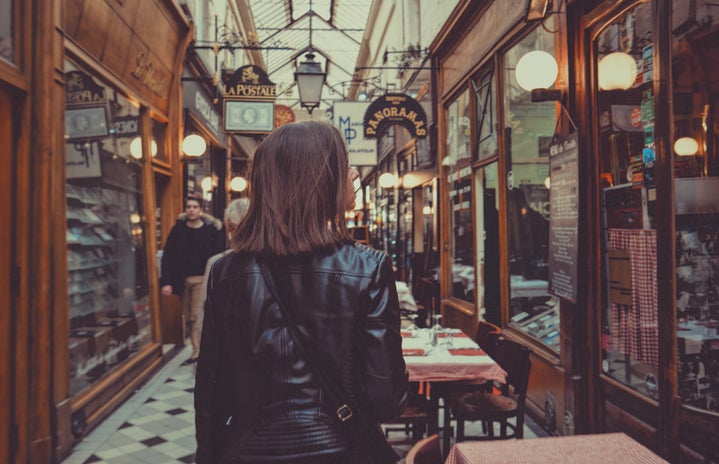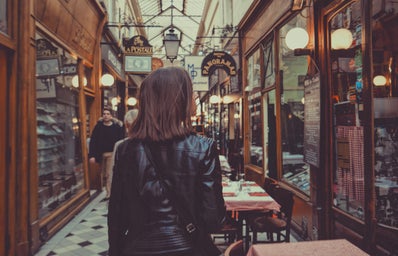By now, most of the fashion community is very aware of the one thing we all need to do: be more sustainable. This includes neglecting fast fashion (at least as much as possible) and shopping less frequently. The real struggle here is that fast fashion culture is so ingrained into our minds. Many of us, at some level, are a bit of a shopaholic. We are used to the cycle of buying new styles frequently, whether it’s for a new season, a special occasion, or just for fun. The problem is understood, and we know a proposed solution, but the steps to execute the solution are missing. How does one cut back on shopping and still get the same fulfillment when they get dressed in the morning? How can we turn clothing shopping into a truly special occasion or need-based activity? Now, I am by no means an expert on answering these questions, but I do have some tips that have been helping me as I attempt to be a less frequent shopper.
- Keep an Online Collection of Wants
-
I am quite an avid online shopper, but that doesn’t mean I am an avid online buyer. Instead of trying to avoid looking at new styles, I embrace it. I add all of the things I love to my cart but don’t stop there! I keep a Google Doc with a table labeled with different categories. For each item that catches my eye, I attach a picture, a price and link the picture to the website. Keeping all of the things I’m loving in one place first helps to visualize how the things I am liking could come together to form outfits.
When it comes to having a more sustainable wardrobe, it’s extremely important to be able to create a lot of outfits from not a lot of individual pieces. Not only does my table help to see common themes, but it also helps me actually think through a piece and forces me to take time to analyze it.
I have come to understand that the reason I rotate things out of my closet so quickly is that in the past, most of my purchases have been impulse decisions. Now, I won’t go into all of the psychological details on why an impulse decision won’t be helpful in the long run, but I will say this, impulse decisions are made before the recognition of a need, so, in turn you are buying things you may already have something similar to, or that may just not have a helpful place in your wardrobe. Plus, you are wasting money on something you didn’t have a recognized need for when you could be using the money to invest in pieces that will fill gaps in your wardrobe.
This process has really proved to me how often I change my mind, and you would be surprised at how quickly something gets deleted off the table once I really analyze how it could really work for me, what it would really look like, and how much use I could really get out of it. On the occasion, something stays on the table for a long period of time and I have weighed all of the pros and cons of the item, then it can become a lucky winner for when I do decide to make some real purchases.
- Shop Your Closet
-
It can be very easy to fall into a habit with our clothing. We find some pieces that look nice together and then default to that look when we pick up one of the pieces involved. A really fun challenge is to layout, or organize your clothes and reimagine ways your pieces can be used. One way to go about this is to pick a piece good for layering, like a sweater, or a spaghetti-strapped dress and play with different things you can wear under or over the pieces. This is a great way pieces used in summer can be made ideal for fall, giving you more options for the colder seasons. Pinterest can also be really helpful when it comes to creating new outfits. Say you have a pair of wide-leg pants that you love but that you really only wear one way, search wide-leg pants on Pinterest and look through the thousands of outfit combinations that you can recreate with your own pieces. Getting re-inspired by the clothing already in our possession can help with the longevity of fashion pieces while also helping to reduce the urge to buy new things. Sometimes it’s about trial and error, and you may rock a bit of a funky look or two while trying to figure out what new outfits work for you and which don’t, but that is the fun of fashion! The biggest risk-takers are usually the ones with the coolest style and they pair things together no one else would have thought to.
- Have a Checklist When You do go Shopping
-
When I say checklist, I don’t necessarily mean a checklist of things you need to get, but rather a checklist to keep handy for when you are tempted by something. It is inevitable when trying not to shop that you will end up back in your favorite stores so a checklist can help keep you from impulse purchases. On the checklist should be steps to analyze what you are considering purchasing. First, a note to ask the rule of three question: name three outfits you can make with the piece and three occasions in which you would wear them. Also on the checklist is a reminder to analyze the quality of the garment. Is it something that will last more than a season? Is it comfortable to wear? Does it really fit properly? Some other ideas for the checklist can be a real description of what you are missing within your wardrobe, so you are reminded of the spaces you have already considered filling. Also, keeping a Pinterest board with style inspiration can be helpful for analyzing how much what you are considering fits with the look/style you gravitate towards, so adding a note to check your inspiration can be helpful as well. If the piece passes the majority of the tests, then it’s probably worth getting, but anything that fails a lot of the tests should be left behind.
My awareness of how much of a struggle this process can be is very high. I am still in the process of implicating these habits myself, and like any habit, a shopping habit will take time and dedication to break. For now, these steps are aiding the process and are keeping me in check when it comes to the amount I contribute to fashion pollution, as well as the amount of money I spend on clothing that enters and exits my life rapidly. Hopefully, these tips can aid other people in the process towards better shopping habits, and remember if you are working towards it, you aren’t alone!
Here is to more successful, sustainable closets!



